Defra explains that it is proposing a staged reduction in residual waste arisings of 50% by 2042, an ambition which was announced on 16 March (see letsrecycle.com story). The residual waste reduction target come out of a commitment in the Environment Act 2021 to set binding targets across various policy areas.
The policy proposal heralds a raft of new legislation coming in the years after the Consistency and Packaging Reforms already underway. They will apply to residual waste excluding mineral waste arisings but not specifically to local authority collected waste although this will form a big part of the targeted waste.
Costs
In a detailed evidence report and impact assessment published on 28 April 2022 to go with the consultation document, there is talk of £3.69 billion in new treatment costs for local authorities and businesses – and of further ‘price-based levers’ which will be involved in reaching the target, [see Impact Assessment, page 3]. Also expected is £841 million of additional collection costs. Taken together, these measures will make it more expensive “to dispose of waste through waste management options typically associated with residual waste”.
The report makes some reference to energy from waste saying that while it is preferable to landfill, energy from waste treatment “still has some environmental impacts”. It continues: “Optimising and reducing the amount of waste sent to incineration will reduce these impacts and support the circular economy principles.”
While the document does not go so far as to mention an incineration tax, in light of the talk of ‘price-based levers’ some waste sector experts are likely to consider this could herald the imposition of an incineration tax for all waste or at least for waste plastics sent for energy recovery.
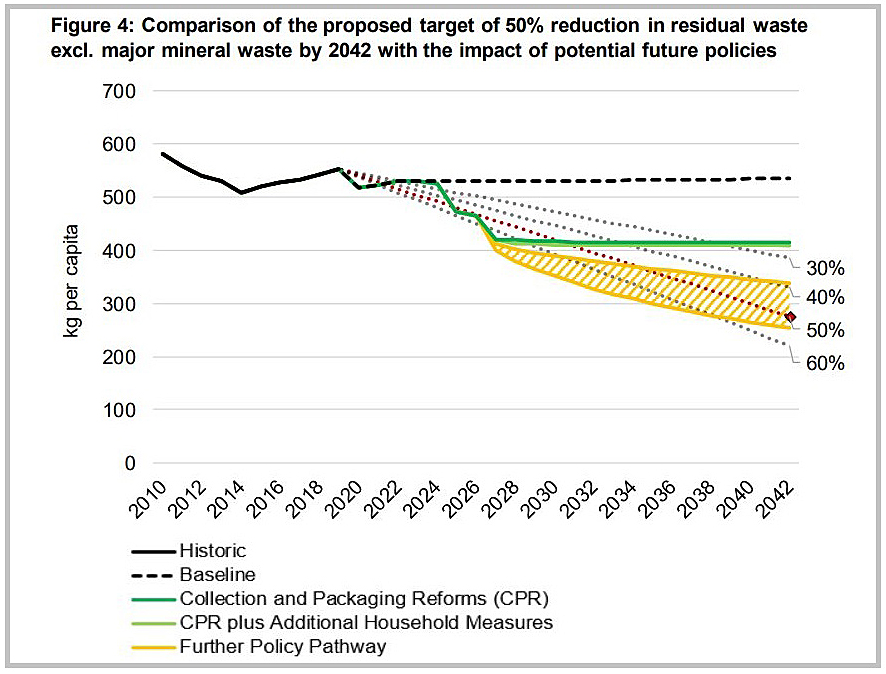
Achievable
In its evidence document Defra says that its “modelling suggests that a 50% reduction by 2042 is highly ambitious but achievable… A 2050 deadline for the 50% reduction would be a lower risk option but, given that 50% is within the feasible target range for 2042, the target deadline is proposed to be set at the earlier date of 2042 to drive environmental improvements as soon as possible.” It is proposed that this will be measured as a reduction from 2019 levels, which are estimated to be approximately 560 kg per capita.
The targets form part of the government’s response to what is says is the clear scientific case, and growing public demand, for a step-change in environmental protection. “Environmental targets will require action across the economy and will provide long-term certainty to businesses and society. This will stimulate innovation and economic growth and will create and support green jobs across the country.”
Environmental targets will require action across the economy and will provide long-term certainty to businesses and society.
The documents note that the Environment Act 2021 has a target area pledged for resource efficiency and waste reduction and that it is hoped that these reforms “will increase the proportion of waste that is recovered or sent for recycling, driving waste further up the waste hierarchy, and therefore retaining a greater amount of materials within the circular economy for a longer time”.
Two actions
Explaining how the 50% reduction could be met, the document says that reducing residual waste could be achieved in two ways:
(1) Preventing waste from occurring in the first place, with strong links to reduced or more efficient material consumption,
(2) By recycling the waste we do generate into secondary materials (a more sustainable alternative to extracting and processing raw materials), moving waste up the waste hierarchy and increasing the recycling rate.
The proposed target scope includes all residual waste excluding major mineral wastes, i.e., excluding the predominant, and largely inert, waste categories from construction and 10 demolition, such as concrete, bricks and sand, as well as soils and other mineral wastes from excavation and mining activities.
This definition, says the document, is proposed so that there is a focus of attention on where the environmental impact per tonne of waste is greatest, such as landfilling biodegradable materials or incinerating plastic.
Explaining the rationale for an overarching residual waste target, Defra says that this will provide the most helpful measure of waste reduction.
Weight-based
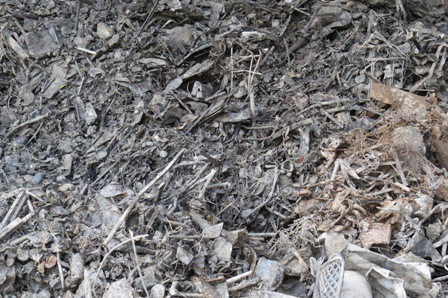
The documents note: “We are aware that, as a weight-based target, it could be perceived that we are prioritising the reduction/improved recycling of heavier waste materials over lighter ones. We will seek to avoid that and any other unintended consequences through the monitoring of waste composition and careful consideration of policy interventions according to environmental impact.”
The proposed scope will also include incinerator bottom ash metals (IBA metals) that are retrieved and ultimately recycled following incineration. Although these are ultimately recycled, Defra proposes to still include them within the target scope (i.e., not to deduct tonnages of IBA metals from total incineration in the metric) to incentivise the separation of these materials earlier in the waste management process, before they are put through incineration.
Additional policies and measures, says the document, that could be considered to further progress “include price-based levers to make it more expensive to dispose of waste through waste management options typically associated with residual waste, specification of producer responsibility across a range of different products and materials, or regulatory levers to maximise municipal recycling rates” beyond Consistency and Packaging Reform.
Related link
The evidence document and impact assessment for the 50% target can be seen on Defra’s Consultation page under ‘Resource efficiency and waste reduction targets’. The consultation closes next week although it might be extended.





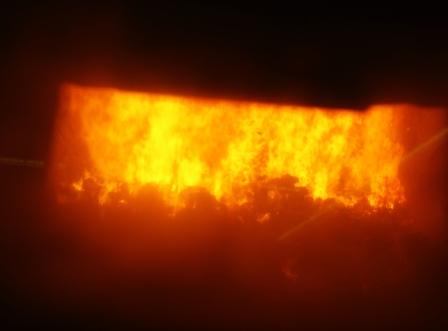

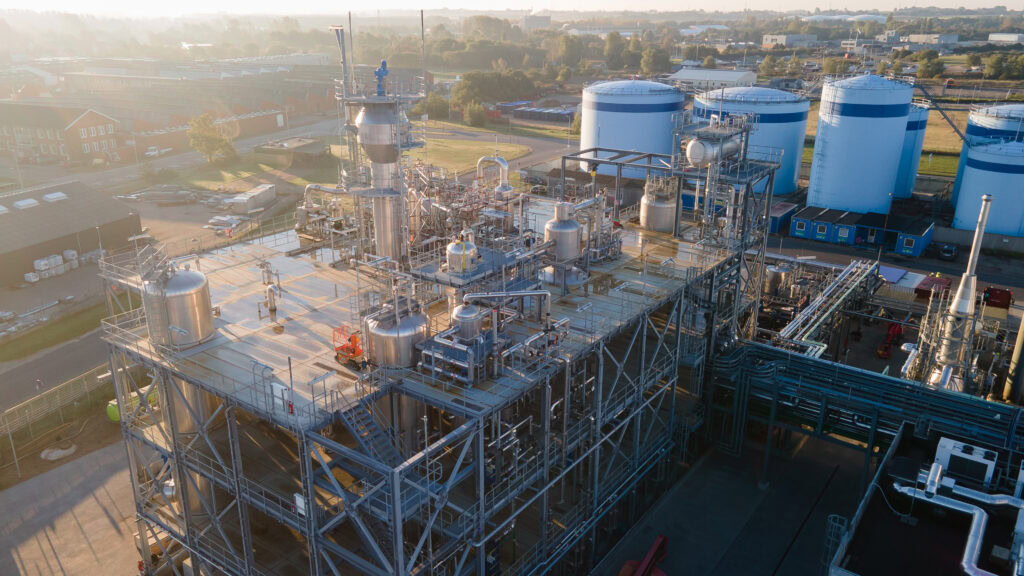
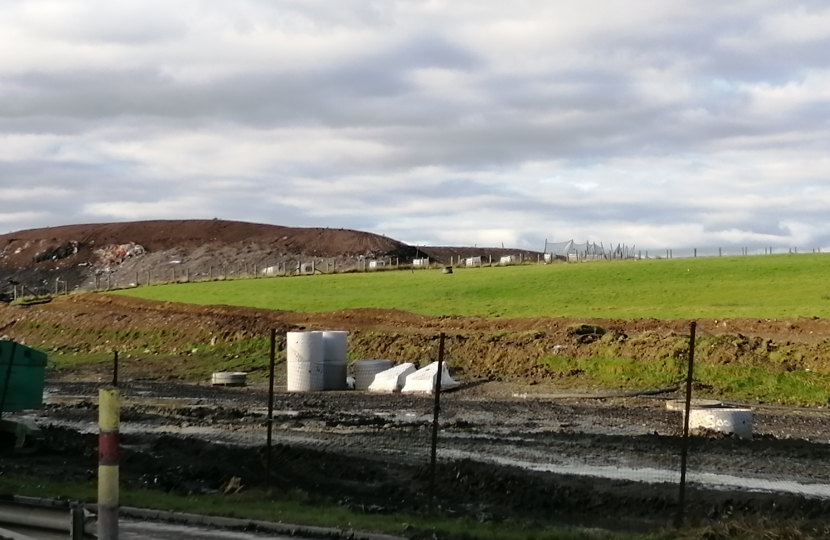
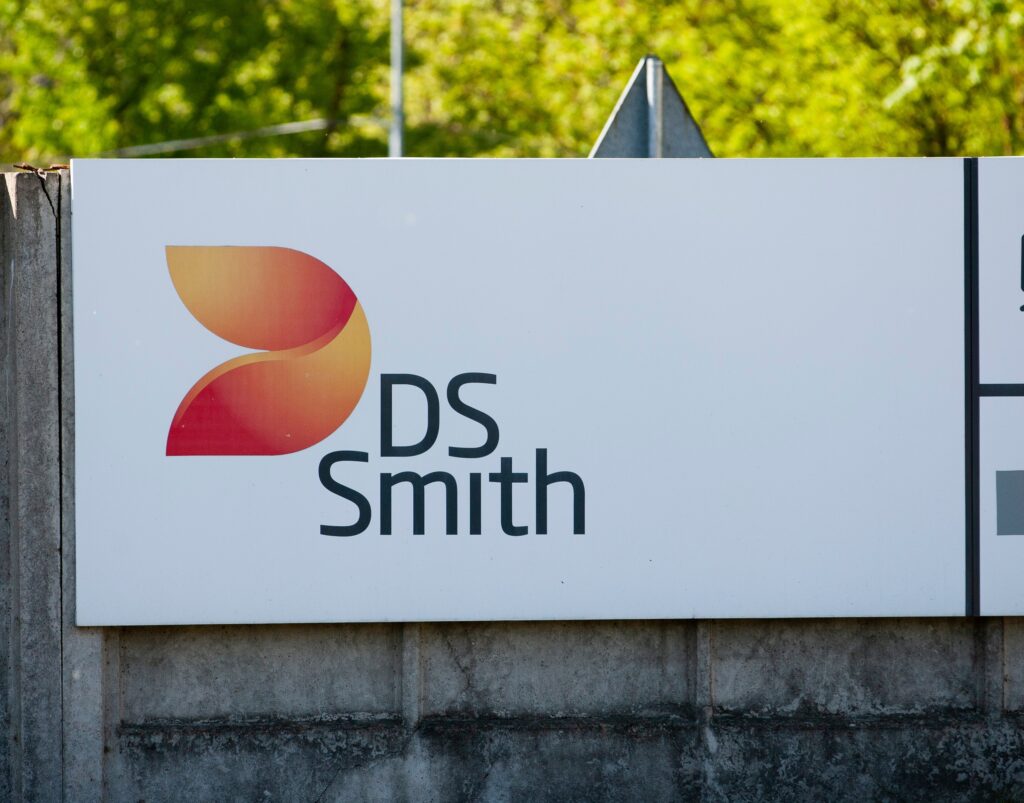


Subscribe for free